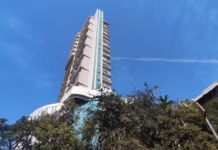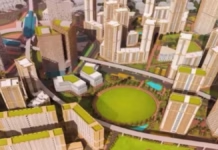Sustainability in the built environment demands more than token gestures; it requires a holistic, systemic shift across six key fronts: marrying vernacular wisdom with modern technology, embedding passive design, slashing carbon in construction, retrofitting existing stock, weaving sustainability into urban fabrics, and rethinking construction workflows. Across India, pioneering projects—from TERI’s earth-air‑cooled Retreat in Gwal Pahari to the LEED‑Platinum CII‑Sohrabji Godrej Green Business Centre in Hyderabad, and the metamorphosis of Mumbai’s IF.BE Ice Factory—demonstrate how these strategies can be realized in practice. Together, they chart a roadmap for truly sustainable urban futures.
-
Vernacular Architecture Meets Modern Technology
India’s climatic diversity and millennia of local building traditions offer blueprints for low‑impact design. The TERI Retreat in Gwal Pahari, Haryana, transforms a once‑barren landscape into an ecological campus grounded in passive techniques and indigenous materials. Guided by architects Ashok Lall and A.N. Chaturvedi, the project retains natural terrain and employs earth‑air tunnels—4 m‑deep conduits that temper incoming air—to maintain comfort without air conditioning. Indigenous species restore biodiversity, while “dhulaai‑daana” exterior finish harnesses monsoon rains to wash façades, eliminating paints and coatings. Solar panels, a smart mini‑grid, and rainwater harvesting close resource loops, making TERI Retreat a living laboratory for vernacular‑tech synthesis.

Figure 1: TERI Gram RETREAT (Resource-Efficient TERI Retreat for Environmental Awareness and Training)
-
Passive Design: Designing for the Environment
Passive design—tuning form, orientation, and fabric to the climate—remains underutilized despite its proven efficacy. India’s CII‑Sohrabji Godrej Green Business Centre in Hyderabad, the nation’s first LEED Platinum building, exemplifies best practice. Architects Karan Grover and Associates oriented its circular plan to optimize daylight, integrated jali screens for solar shading, and harnessed natural ventilation via wind towers. The high‑performance envelope, featuring spectrally selective glazing and phase‑change materials, slashes cooling loads. Rainwater harvesting and greywater reuse cut potable demand by over 35%. These passive strategies not only yield a 50% reduction in energy demand compared to conventional offices but also set a benchmark for India’s climate‑responsive architecture.

Figure 2: CII – Sohrabji Godrej Green Business Centre
-
Reducing Carbon Emissions in Construction
Emissions from material production represent a critical share of a building’s carbon footprint. The Ahmedabad University Design Research Centre, designed by Stephane Paumier Architects, addresses this by specifying low‑carbon materials and optimizing structural spans to minimize concrete volume. Its long, cantilevered canopies crafted from high‑strength T‑beams reduce embodied carbon, while locally quarried limestone clads façades, cutting transport emissions. The building’s modular envelope accommodates future adaptation, prolonging its service life. By integrating recycled steel, fly ash bricks, and eco‑cement, the project exemplifies how carbon‑conscious detailing can be embedded from the masterplan through to the mortar.

Figure 3: Ahmedabad University Centre
-
Retrofitting: Addressing Existing Buildings
No sustainability agenda is complete without upgrading the vast legacy of sub‑optimal stock. In Mumbai’s historic Ballard Estate, IF.BE Ice Factory by Malik Architecture revives a disused cold storage facility into a vibrant cultural hub. Rather than demolition, the design rehabilitates the original brick shell, inserting lightweight steel and glass volumes to house galleries and studios. This adaptive reuse preserves embodied energy, reduces landfill waste, and revitalizes public space. By exposing existing beams and layering new services within secondary structures, the project demonstrates that retrofitting can be both resource‑efficient and architecturally expressive.

Figure 4: IF.BE Ice Factory Ballard Estate
-
Sustainability in Urban Design
Building‑level interventions must be complemented by city‑scale strategies. Sabarmati Riverfront in Ahmedabad reclaimed riverbank for mixed‑use public realm, flood management, and groundwater recharge. The two‑tier promenade, cycle lanes, and Atal Pedestrian Bridge knit together housing, parks, and cultural nodes within a 22 km stretch, reducing car dependency and enhancing walkability. Integrated sewage interception and stormwater systems improve water quality, while event lawns and urban forests foster social cohesion. This masterplan showcases how strategic riverbank redevelopment can catalyse sustainable transport, recreation, and ecological restoration in Indian cities.

Figure 5: Sabarmati Riverfront Ahmedabad
-
Redesigning Construction Practices for Sustainability
The construction phase itself offers immense opportunities to embed circularity. Infosys’ Mysore Campus, with its mix of new LEED Platinum‑rated buildings and deep retrofits, illustrates a two‑pronged approach. New blocks employ insulated envelopes, VRV HVAC, and rooftop photovoltaics for net‑zero aspirations, while existing food courts and training centers undergo chiller plant upgrades, BMS and lighting retrofits to slash operational loads by 40%. Construction waste is rigorously segregated and recycled, and regional sourcing of over 40% of materials minimizes haulage emissions. This commitment to continual improvement—integrating both cradle‑to‑grave and cradle‑to‑cradle thinking—demonstrates how industry leaders can reengineer workflows to close material loops and drive systemic change.

Figure 6:Infosys Mysore Campus
India’s built environment stands at an inflection point. The projects highlighted here encapsulate the shift from superficial “green” branding to substantive, scalable interventions rooted in local context, passive logic, carbon stewardship, and integration across scales. By weaving these six strategies—vernacular integration, passive design, low‑carbon materials, retrofitting, urban‑scale sustainability, and circular construction—into mainstream practice, Indian cities can rise to the dual imperatives of climate mitigation and resilient, human‑centric urbanism. The blueprint is clear; the question now is one of implementation and collective will.







